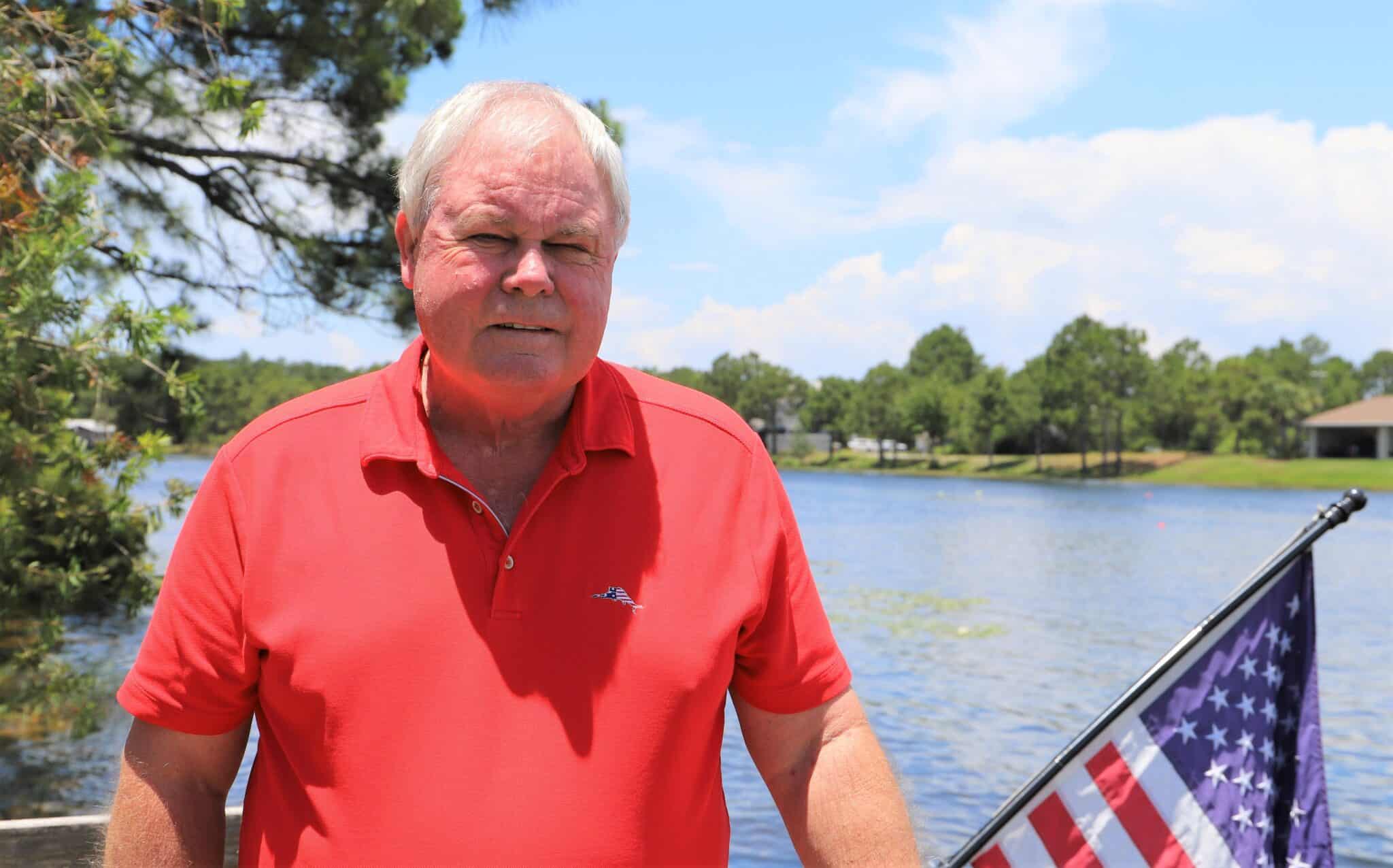View Larger Image

Retired attorney James Jaquess
Retired Attorney Writes Book about Myeloma Journey, Exceptional Care
| Retired attorney James Jaquess can’t say enough about the care he received at the University of Arkansas for Medical Sciences (UAMS) Myeloma Center. In fact, UAMS features prominently in his book “Multiple Myeloma: A Journey to Remission.”
Jaquess is being treated at UAMS as well as at the Emerald Coast Cancer Center in Fort Walton Beach, Florida.
“The book gives you an opening into what myeloma is,” said Jaquess, who lives in the community of Santa Rosa Beach, about 25 miles east of Fort Walton Beach on Florida’s Gulf Coast. “The intent of the book was that going to UAMS saved my life.”
Jaquess’ path started with what he thought was a simple back issue.
“In March 2018, I thought I had a pinched nerve in my back,” Jaquess said. “I had those episodes before, I would take muscle relaxers, and the pain would go away. This pain never went away, and it kept getting worse and worse.”
One of Jaquess’ daughters contacted a nurse, who in turn recommended he contact Robert Feldman, M.D., a neurological specialist in Fort Walton Beach.
“He took X-rays and told me one of my vertebrae was cracked,” said Jaquess. “He also told me he pulled a sample of my bone marrow, found something he didn’t like, and referred me to an oncologist.”
That oncologist was Y. Henry Hsiang, M.D., Ph.D., who gave Jaquess the diagnosis.
“He told me I had multiple myeloma — I didn’t even know what myeloma was,” Jaquess said. “He explained that my bone marrow was at 60% abnormality, but it was confined to just my bones. He referred me to UAMS, and said it was the best place for treatment of myeloma.”
Coming to UAMS was not Jaquess’ first time in Arkansas. He notes in his book that he had taken many business trips to the Arkansas Nuclear One plant in Russellville.
The initial meeting at UAMS took place in early June 2018.
“I flew out on my initial trip,” said Jaquess. “There was an article about UAMS in a magazine on the plane featuring a lady who was in her 25th year of remission. I thought that was positive.”
“I was really impressed when I came to UAMS,” Jaquess continued. “I was given a three-ring binder that had everything I needed to know. We had an initial meeting with the doctors, staff and administrative people. It was really good — the insurance people were there and they handled everything.”
Sharmilan Thanendrarajan, M.D., is currently in charge of Jaquess’ treatment.
“Mr. Jaquess underwent an intensive treatment protocol, including induction chemotherapy, high-dose chemotherapy with autologous stem cell transplantation, followed by maintenance therapy,” said Thanendrarajan.
Jaquess’ routine now includes teleconferences with Thanendrarajan and DARZALEX (daratumumab) injections in Fort Walton Beach. Daratumumab is a monoclonal antibody for patients with multiple myeloma.
“It used to be a three to four-hour process by IV every month,” said Jaquess. “Now it’s just a five-minute injection into my abdomen every other month.”
Jaquess’ most recent trip to UAMS was in February, and he noted that no traces of myeloma came back on his tests.
“He qualifies as stringent complete remission,” Thanendrarajan said. Stringent complete remission is the best response possible regarding a patient’s multiple myeloma treatment.
Jaquess praised the process when visiting UAMS.
“I go in one day and have all of my procedures done. Sometimes I’m there until 7 or 8 p.m., but I don’t care because I want it done. The next day I can see Dr. Thanendrarajan, and then I can leave. I’m only there for two days, and it’s amazing to get that much work done.
“One of the things about UAMS that really stands out is the Myeloma Center. If you have to have a CT scan or an MRI, you just go down the hallway or around the corner. If I was in Florida, I would have to go to a different hospital or wait for two days to get in.”
For Jaquess, the book was another form of therapy.
“Everything I had read about myeloma had been negative. The drugs today are so much different, and I wanted people to see what I went through and how I progressed,” said Jaquess. “I don’t feel like I have any problems at all.”